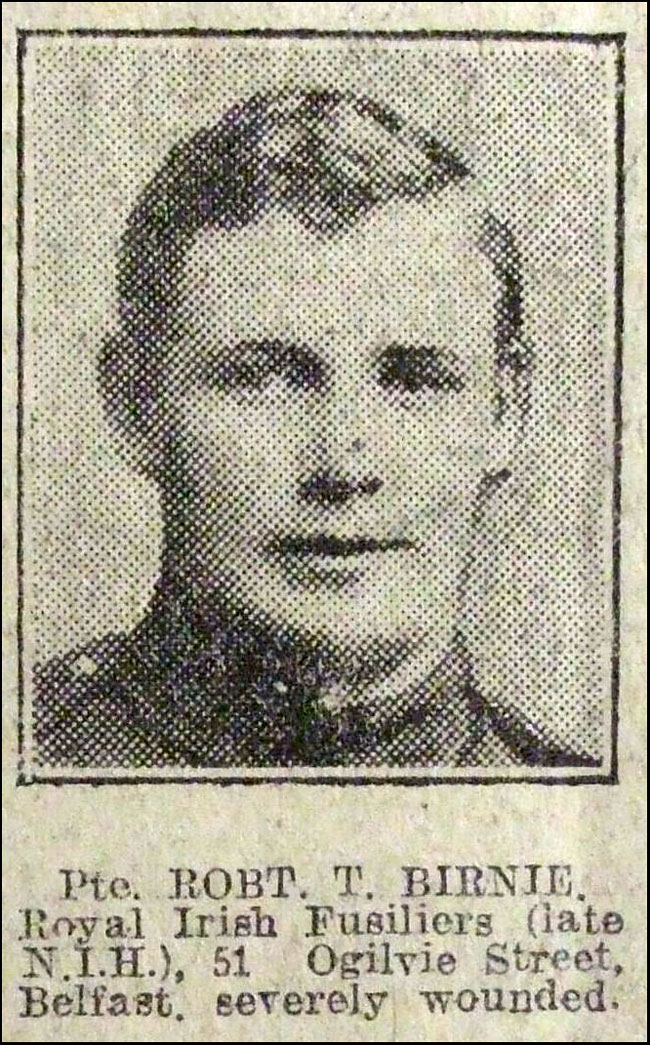Private Robert Turner Birnie

Robert Turner Birnie was born in 1896 or 1897 at Barrow-in-Furness, Lancashire, the first of three children of American-born shipboard brass finisher John Birnie and his English-born wife Bridget Ann (nee Turner). At some point before the war the family moved to Ireland, and by the time of the 1911 Census was living at 51 Ogilvie Street, Belfast – Robert being the only surviving child.
Birnie enlisted in the North Irish Horse on 9 November 1915 (No.1832). He embarked for France in 1916 or the first half of 1917, where he was posted to one of the squadrons of the 1st or 2nd North Irish Horse Regiments.
In September 1917 the 2nd North Irish Horse Regiment was disbanded and most of its men, together with some surplus to the needs of the 1st NIH Regiment, were transferred to the 9th (Service) Battalion, Royal Irish Fusiliers – renamed the 9th (North Irish Horse) Battalion. Like most of the men, Birnie was transferred on 20 September. He was issued a new regimental number – 41526. He may have seen action with the battalion at the Battle of Cambrai in November and December 1917 and possibly during the withdrawal from St Quentin from 21 to 28 March 1918.
On 30 March 1918 Birnie transferred to the newly formed 36th Battalion, Machine Gun Corps (No.143851), attached to the 36th (Ulster) Division. He was severely wounded soon after, probably in the fighting on the Ypres front.
On 12 June 1919 he was discharged, being no longer physically fit for military service due to his wounds (Paragraph 392 xvi, King's Regulations). After the war he was granted a pension, his ongoing disability having been assessed at 50 per cent.
Birnie died at Crawfordsburn Hospital, County Down, on 8 December 1977.
Image from the Belfast Evening Telegraph, from the second quarter of 1918, kindly provided by Nigel Henderson, Researcher at History Hub Ulster (www.greatwarbelfastclippings.com).
